Your Restriction modification system animation images are ready in this website. Restriction modification system animation are a topic that is being searched for and liked by netizens now. You can Find and Download the Restriction modification system animation files here. Get all free photos and vectors.
If you’re searching for restriction modification system animation pictures information related to the restriction modification system animation topic, you have come to the ideal site. Our site always provides you with hints for refferencing the maximum quality video and picture content, please kindly surf and find more informative video articles and images that fit your interests.
Restriction Modification System Animation. View Restriction-Modification Systems Research Papers on Academiaedu for free. Restriction-modification RM systems represent a minimal and ubiquitous biological system of selfnon-self discrimination in prokaryotes 1 which protects hosts from exogenous DNA 2. It was first discovered by Salvatore Luria and Mary Human in 1952 and 1953. Restriction enzymes are one class of the broader endonuclease group of enzymes.
 Khansa Bukhari Maryum Zeb Ppt Download From slideplayer.com
Khansa Bukhari Maryum Zeb Ppt Download From slideplayer.com
A restriction endonuclease REase and a methyltransferase MTase. A restriction enzyme restriction endonuclease or restrictase is an enzyme that cleaves DNA into fragments at or near specific recognition sites within molecules known as restriction sites. The restrictionmodification system in bacteria is a small-scale immune system for protection from infection by foreign DNA. Host DNA is protected from this cleavage by being modified methylated. Host-controlled restriction and modification Restriction systems allow bacteria to monitor the origin of incoming DNA and to destroy it if it is recognized as foreign. The restriction modification system RM system is used by bacteria and perhaps other prokaryotic organisms to protect themselves from foreign DNA such as the one borne by bacteriophages.
Background Restriction-modification R-M systems are important components of prokaryotic defense mechanisms against invading genomes.
RM complexes attack invading DNA that has not been properly modified and thus may serve as a tool of defense for bacterial cells. These highly efficient molecular machines are often considered to be primitive bacterial immune systems. Restriction-modification RM systems represent a minimal and ubiquitous biological system of selfnon-self discrimination in prokaryotes 1 which protects hosts from exogenous DNA 2. RM systems sometimes behave as discrete units of life like viruses and transposons. The second describes relevant aspects of the microbial lifestyle including bacteriophage. The restriction modification system RM system is used by bacteria and perhaps other prokaryotic organisms to protect themselves from foreign DNA such as the one borne by bacteriophages.
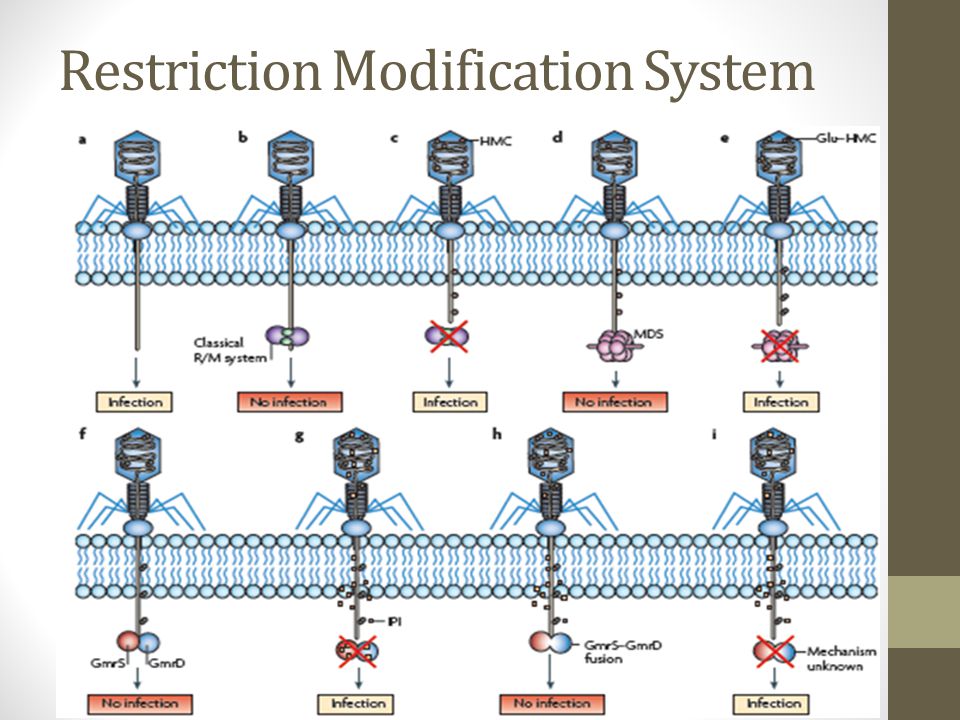 Source: slideplayer.com
Source: slideplayer.com
Restrictionmodification systems have yielded enzymes central to biotechnology but their natural roles appear to have fundamental importance in the genetic ecology of the biosphere. Background Restriction-modification R-M systems are important components of prokaryotic defense mechanisms against invading genomes. While host DNA is protected by modification enzyme a methyltransferase that modifies the prokaryotic DNA and. It was first discovered by Salvatore Luria and Mary Human in 1952 and 1953. RestrictionModification Systems The restriction endonuclease component of restrictionmodification RM systems recognizes and cuts DNA at a specific base sequence so that incoming unprotected phage DNA is cleaved and is thus unable to replicate.
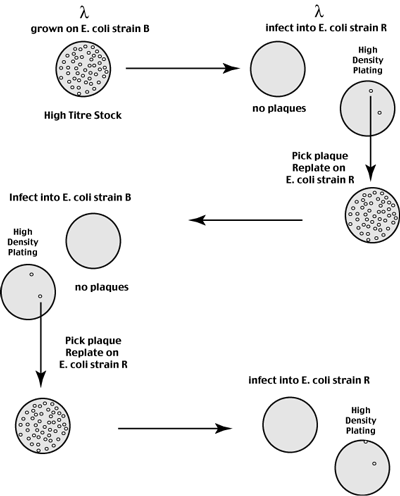 Source: faculty.tru.ca
Source: faculty.tru.ca
While host DNA is protected by modification enzyme a methyltransferase that modifies the prokaryotic DNA and. Host DNA is protected from this cleavage by being modified methylated. The second describes relevant aspects of the microbial lifestyle including bacteriophage. Restrictionmodification systems have yielded enzymes central to biotechnology but their natural roles appear to have fundamental importance in the genetic ecology of the biosphere. RM complexes attack invading DNA that has not been properly modified and thus may serve as a tool of defense for bacterial cells.
 Source: nature.com
Source: nature.com
They were originally discovered as DNA cleaving enzymes that. This chapter has nine sections. The restrictionmodification system in bacteria is a small-scale immune system for protection from infection by foreign DNA. Restriction endonucleases recognize SPECIFIC sequences in the incoming DNA and cleave the DNA into fragments either at specific sites or more randomly thus preventing it from. The first provides a historical overview.
 Source: pinterest.com
Source: pinterest.com
They occur in a wide variety of unicellular organisms including eubacteria and archaea 1 2 and comprise two contrasting enzymatic activities. Coli strains C K-12 and B when plated on these bacteria. RM systems sometimes behave as discrete units of life like viruses and transposons. Restriction enzymes are commonly classified into five types which differ in their structure and whether they cut their DNA. RestrictionModification Systems The restriction endonuclease component of restrictionmodification RM systems recognizes and cuts DNA at a specific base sequence so that incoming unprotected phage DNA is cleaved and is thus unable to replicate.
 Source: youtube.com
Source: youtube.com
It was first discovered by Salvatore Luria and Mary Human in 1952 and 1953. RM systems sometimes behave as discrete units of life like viruses and transposons. View Restriction-Modification Systems Research Papers on Academiaedu for free. They were originally discovered as DNA cleaving enzymes that. Restriction-modification R-M systems are abundant ubiquitous and minimal independent systems that limit exogenous invading DNA elements from becoming established in bacterial cells.
 Source: slideplayer.com
Source: slideplayer.com
The restrictionmodification system in bacteria is a small-scale immune system for protection from infection by foreign DNA. Restriction-modification RM systems represent a minimal and ubiquitous biological system of selfnon-self discrimination in prokaryotes 1 which protects hosts from exogenous DNA 2. RM systems sometimes behave as discrete units of life like viruses and transposons. These highly efficient molecular machines are often considered to be primitive bacterial immune systems. Linn 1969 Plating efficiencies of bacteriophage lambda l phage grown on E.
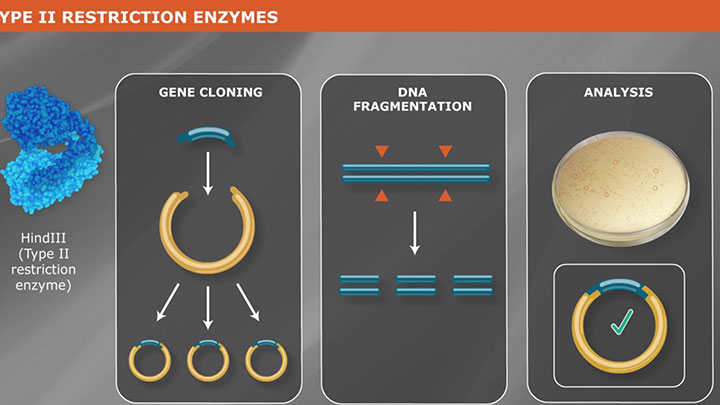 Source: international.neb.com
Source: international.neb.com
Linn 1969 Plating efficiencies of bacteriophage lambda l phage grown on E. Linn 1969 Plating efficiencies of bacteriophage lambda l phage grown on E. Restriction enzymes are one class of the broader endonuclease group of enzymes. RM complexes attack invading DNA that has not been properly modified and thus may serve as a tool of defense for bacterial cells. Restrictionmodification RM systems are defense systems in prokaryotes that protect them from foreign DNA.
 Source: bioengineeringcommunity.nature.com
Source: bioengineeringcommunity.nature.com
These highly efficient molecular machines are often considered to be primitive bacterial immune systems. The second describes relevant aspects of the microbial lifestyle including bacteriophage. The restriction modification system RM system is used by bacteria and perhaps other prokaryotic organisms to protect themselves from foreign DNA such as the one borne by bacteriophages. This chapter has nine sections. RM systems sometimes behave as discrete units of life like viruses and transposons.
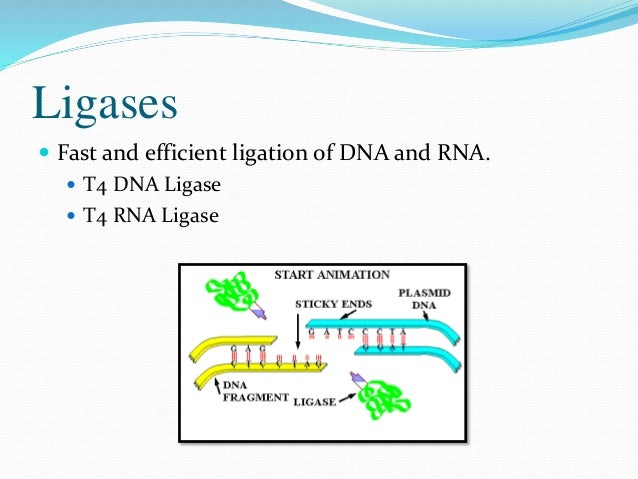 Source: slideshare.net
Source: slideshare.net
RM systems sometimes behave as discrete units of life like viruses and transposons. RestrictionModification Systems The restriction endonuclease component of restrictionmodification RM systems recognizes and cuts DNA at a specific base sequence so that incoming unprotected phage DNA is cleaved and is thus unable to replicate. Restriction Modification System these enzymes are found in bacteria and archaea and provide a defence mechanism against anvading viruses Inside a prokaryotic the restriction enzymes selectively cut up foreign DNA in a process called restriction. This chapter has nine sections. The restrictionmodification system in bacteria is a small-scale immune system for protection from infection by foreign DNA.
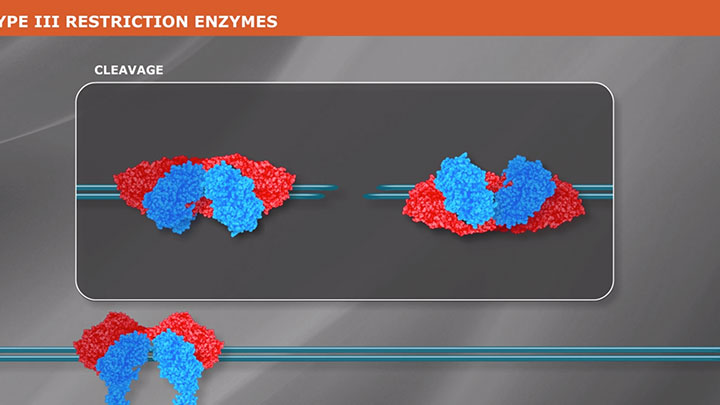 Source: international.neb.com
Source: international.neb.com
RM complexes attack invading DNA that has not been properly modified and thus may serve as a tool of defense for bacterial cells. While host DNA is protected by modification enzyme a methyltransferase that modifies the prokaryotic DNA and. Restriction-modification RM systems represent a minimal and ubiquitous biological system of selfnon-self discrimination in prokaryotes 1 which protects hosts from exogenous DNA 2. They occur in a wide variety of unicellular organisms including eubacteria and archaea 1 2 and comprise two contrasting enzymatic activities. RestrictionModification Systems The restriction endonuclease component of restrictionmodification RM systems recognizes and cuts DNA at a specific base sequence so that incoming unprotected phage DNA is cleaved and is thus unable to replicate.
 Source: pinterest.com
Source: pinterest.com
Restriction-modification R-M systems are abundant ubiquitous and minimal independent systems that limit exogenous invading DNA elements from becoming established in bacterial cells. They were originally discovered as DNA cleaving enzymes that. The second describes relevant aspects of the microbial lifestyle including bacteriophage. Restrictionmodification systems have yielded enzymes central to biotechnology but their natural roles appear to have fundamental importance in the genetic ecology of the biosphere. Background Restriction-modification R-M systems are important components of prokaryotic defense mechanisms against invading genomes.
 Source: slideplayer.com
Source: slideplayer.com
RM systems sometimes behave as discrete units of life like viruses and transposons. Restriction-modification RM systems represent a minimal and ubiquitous biological system of selfnon-self discrimination in prokaryotes 1 which protects hosts from exogenous DNA 2. Restriction enzymes are one class of the broader endonuclease group of enzymes. RestrictionModification Systems The restriction endonuclease component of restrictionmodification RM systems recognizes and cuts DNA at a specific base sequence so that incoming unprotected phage DNA is cleaved and is thus unable to replicate. Restrictionmodification RM systems are composed of genes that encode a restriction enzyme and a modification methylase.
 Source: slideplayer.com
Source: slideplayer.com
Restrictionmodification systems have yielded enzymes central to biotechnology but their natural roles appear to have fundamental importance in the genetic ecology of the biosphere. They occur in a wide variety of unicellular organisms including eubacteria and archaea 1 2 and comprise two contrasting enzymatic activities. Linn 1969 Plating efficiencies of bacteriophage lambda l phage grown on E. The first provides a historical overview. Host-controlled restriction and modification Restriction systems allow bacteria to monitor the origin of incoming DNA and to destroy it if it is recognized as foreign.
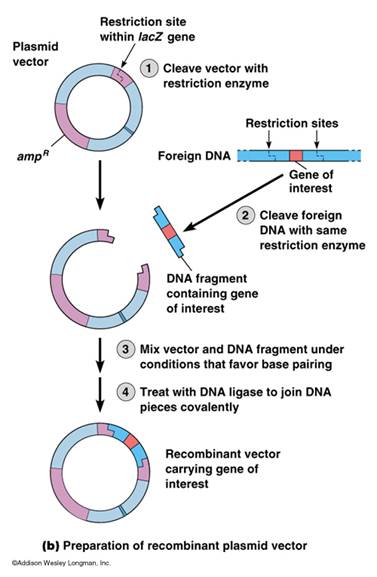 Source: molecular-biology.coe.hawaii.edu
Source: molecular-biology.coe.hawaii.edu
They occur in a wide variety of unicellular organisms including eubacteria and archaea 1 2 and comprise two contrasting enzymatic activities. The first provides a historical overview. Restriction endonucleases recognize SPECIFIC sequences in the incoming DNA and cleave the DNA into fragments either at specific sites or more randomly thus preventing it from. Coli strains C K-12 and B when plated on these bacteria. It was first discovered by Salvatore Luria and Mary Human in 1952 and 1953.
 Source: slideplayer.com
Source: slideplayer.com
While host DNA is protected by modification enzyme a methyltransferase that modifies the prokaryotic DNA and. A restriction enzyme restriction endonuclease or restrictase is an enzyme that cleaves DNA into fragments at or near specific recognition sites within molecules known as restriction sites. The mechanism is based on the balance between methyltransferase M and cognate restriction endonuclease R. Restriction endonucleases recognize SPECIFIC sequences in the incoming DNA and cleave the DNA into fragments either at specific sites or more randomly thus preventing it from. Restriction-modification RM systems represent a minimal and ubiquitous biological system of selfnon-self discrimination in prokaryotes 1 which protects hosts from exogenous DNA 2.
 Source: pinterest.com
Source: pinterest.com
The restriction modification system RM system is used by bacteria and perhaps other prokaryotic organisms to protect themselves from foreign DNA such as the one borne by bacteriophages. Restrictionmodification RM systems are composed of genes that encode a restriction enzyme and a modification methylase. The first provides a historical overview. Restriction endonucleases recognize SPECIFIC sequences in the incoming DNA and cleave the DNA into fragments either at specific sites or more randomly thus preventing it from. This chapter has nine sections.
 Source: slideplayer.com
Source: slideplayer.com
A restriction enzyme restriction endonuclease or restrictase is an enzyme that cleaves DNA into fragments at or near specific recognition sites within molecules known as restriction sites. Host-controlled restriction and modification Restriction systems allow bacteria to monitor the origin of incoming DNA and to destroy it if it is recognized as foreign. While host DNA is protected by modification enzyme a methyltransferase that modifies the prokaryotic DNA and. A restriction enzyme restriction endonuclease or restrictase is an enzyme that cleaves DNA into fragments at or near specific recognition sites within molecules known as restriction sites. They occur in a wide variety of unicellular organisms including eubacteria and archaea 1 2 and comprise two contrasting enzymatic activities.
 Source: youtube.com
Source: youtube.com
A restriction endonuclease REase and a methyltransferase MTase. Host-controlled restriction and modification Restriction systems allow bacteria to monitor the origin of incoming DNA and to destroy it if it is recognized as foreign. RM systems sometimes behave as discrete units of life like viruses and transposons. This chapter has nine sections. Linn 1969 Plating efficiencies of bacteriophage lambda l phage grown on E.
This site is an open community for users to share their favorite wallpapers on the internet, all images or pictures in this website are for personal wallpaper use only, it is stricly prohibited to use this wallpaper for commercial purposes, if you are the author and find this image is shared without your permission, please kindly raise a DMCA report to Us.
If you find this site value, please support us by sharing this posts to your preference social media accounts like Facebook, Instagram and so on or you can also save this blog page with the title restriction modification system animation by using Ctrl + D for devices a laptop with a Windows operating system or Command + D for laptops with an Apple operating system. If you use a smartphone, you can also use the drawer menu of the browser you are using. Whether it’s a Windows, Mac, iOS or Android operating system, you will still be able to bookmark this website.





